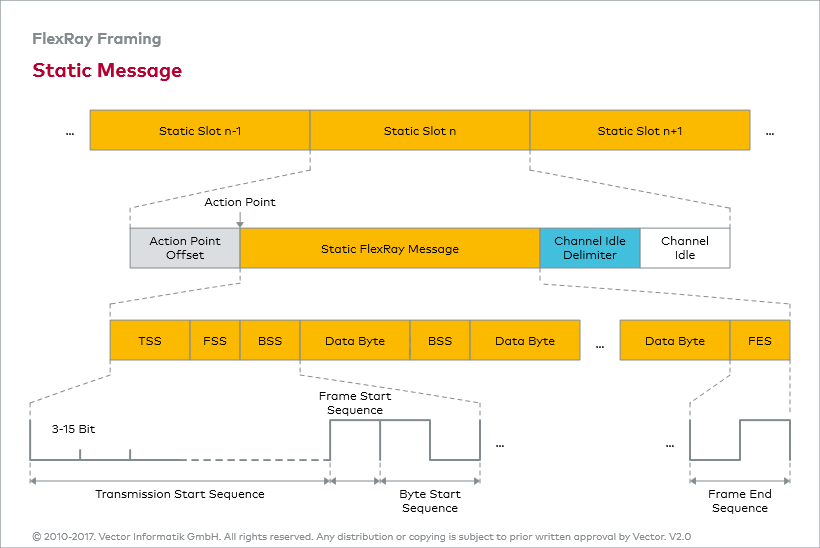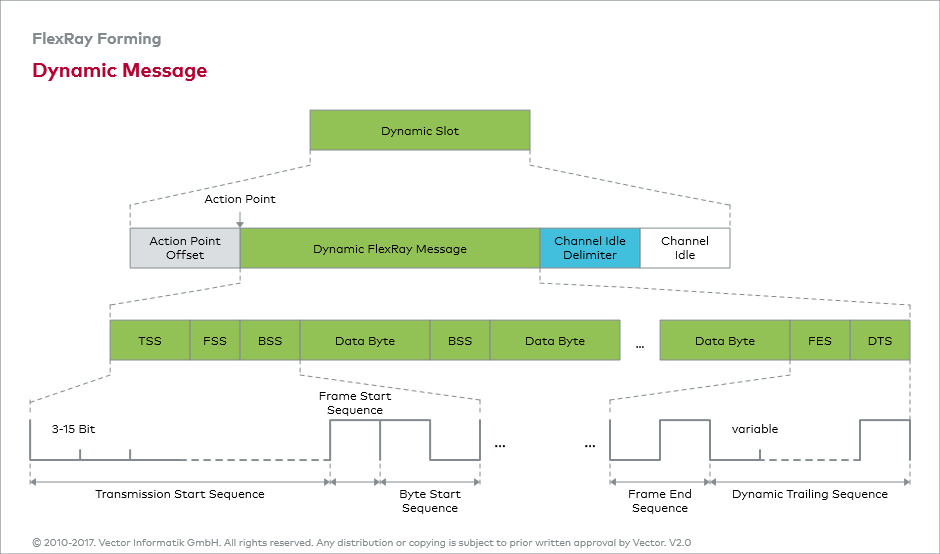Coding
Physical transmission of a message does not begin with the first bit of the frame header, rather with the so-called transmission start sequence (TSS). In the case of a FlexRay cluster based on an active star topology, this is used to prevent the active star coupler from not being able to transport the first bits of a message from the RX branch to the TX branches.
The reason for this is that an active star coupler requires a certain amount of time to reach its operating state (star truncation). In a FlexRay cluster with an active star coupler, the TSS must at least match the star truncation — a minimum of 3 and a maximum of 15 bits of low level.
The TSS is terminated with the so-called frame start sequence (FSS). Following the FSS, the header can be transmitted. It should be noted here that a so-called byte start sequence (BSS) precedes each byte to be transmitted. The receiver uses the edge change created by this sequence for re-synchronization. The end of a message is marked by the so-called frame end sequence (FES).
In both the static slot and dynamic slot, eleven recessive bits (Channel Idle Delimiter) indicate that the communication medium is available. Since — according to FlexRay specification — a dynamic message must end precisely with the next possible action point, the message transmission is extended by the so-called dynamic trailing sequence. This ensures that each receiver can determine the minislot in which the dynamic message ended.
Two figures are provided to illustrate the coding of messages. The figure “Static Message” shows a static message that depicts the code elements necessary for physical transmission. The figure “Dynamic Message” shows a dynamic message and also depicts the code elements necessary for physical transmission.


